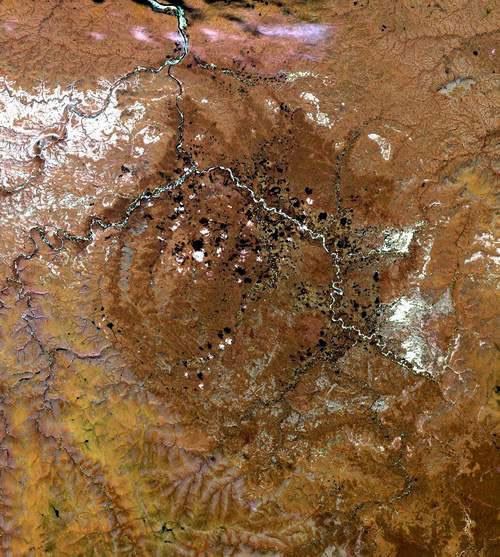 | ||
The Popigai crater (or astrobleme) in Siberia, Russia is tied with the Manicouagan Crater as the fourth largest verified impact crater on Earth. A large bolide impact created the 100-kilometre (62 mi) diameter crater approximately 35 million years ago during the late Eocene epoch (Priabonian stage). It is conjectured that it may have influenced the Eocene–Oligocene extinction event.
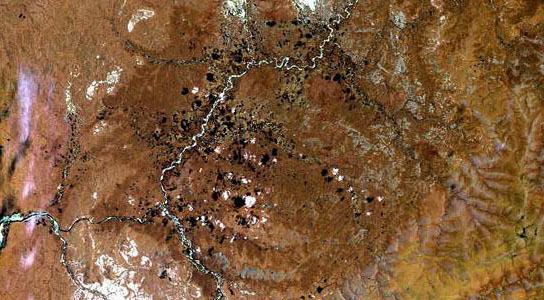
The crater is 300 km (190 mi) east from the outpost of Khatanga and 880 km (550 mi) NE of the city of Norilsk. It is designated by UNESCO as a Geopark, a site of special geological heritage. There is a small possibility that Popigai impact crater formed simultaneous with the approximately 35-million-year-old Chesapeake Bay and Toms Canyon impact craters.
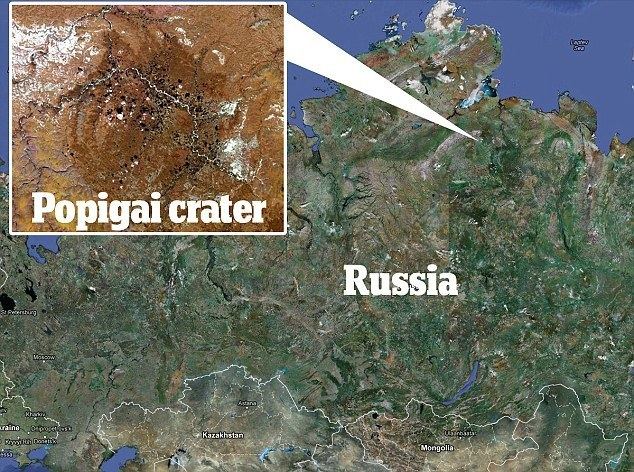
For decades the Popigai crater has fascinated paleontologists and geologists, but the entire area was completely off limits because of the diamonds found there and the mines constructed by gulag prisoners under Stalin. However, a major investigatory expedition was undertaken in 1997, which greatly advanced understanding of the enigmatic structure. The impactor in this event has been identified as either an 8 km (5.0 mi) diameter chondrite asteroid, or a 5 km (3.1 mi) diameter stony asteroid.
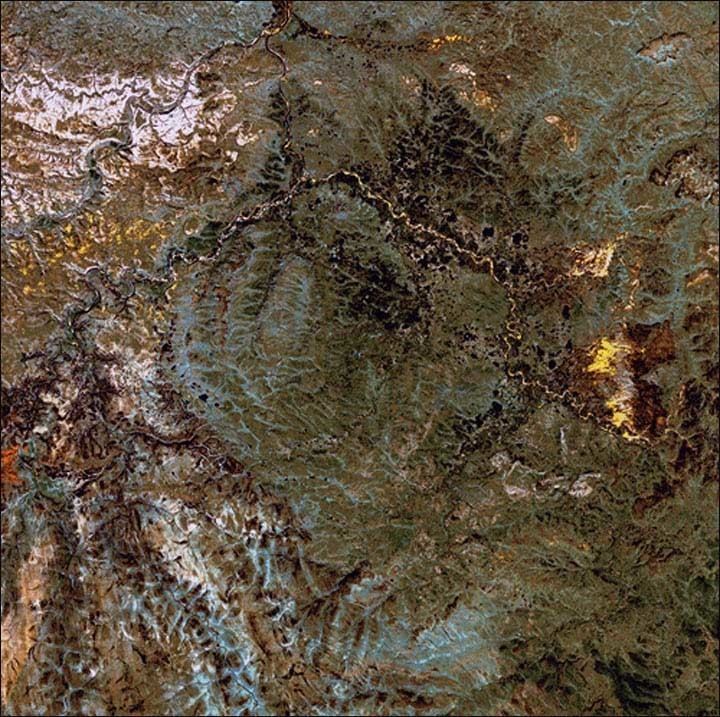
The shock pressures from the impact instantaneously transformed graphite in the ground into diamonds within a 13.6 km (8.5 mi) radius of the impact point. These diamonds are usually 0.5 to 2 mm (0.020 to 0.079 in) in diameter, though a few exceptional specimens are 10 mm (0.39 in) in size. The diamonds not only inherited the tabular shape of the original graphite grains but they additionally preserved the original crystals' delicate striations.
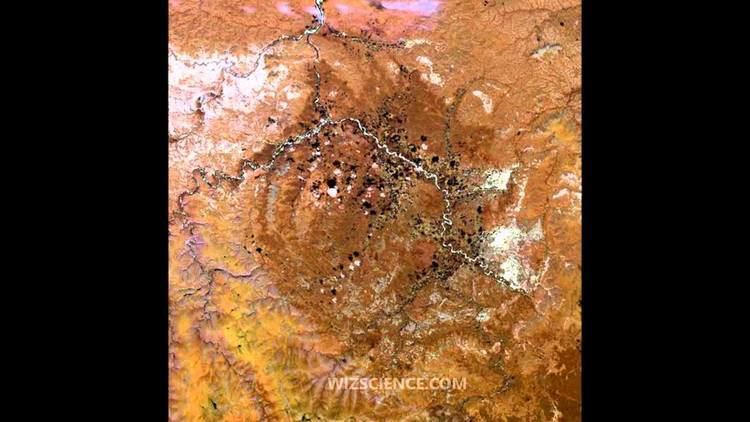
Diamond mines
Most modern industrial diamonds are produced synthetically, so the deposits at Popigai may not be profitable because of the remote location and difficulty of extraction. Many of the diamonds at Popigai contain crystalline lonsdaleite, an allotrope of carbon that has a hexagonal lattice. Pure, laboratory-created lonsdaleite is 58% harder than ordinary diamonds, though it is unknown whether the natural, impure examples at Popigai show similar characteristics. The diamonds also "contain unusual abrasive features and large grain size" which could make them extremely useful for industrial and scientific applications. These types of diamonds are known as "impact diamonds" because they are thought to be produced when a meteorite strikes a graphite deposit at high velocity. They may have industrial uses but are considered unsuitable as gems.
Additionally, carbon polymorphs even harder than lonsdaleite have been discovered in the crater.
